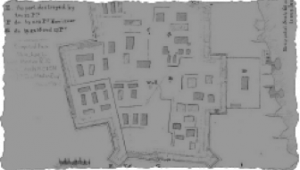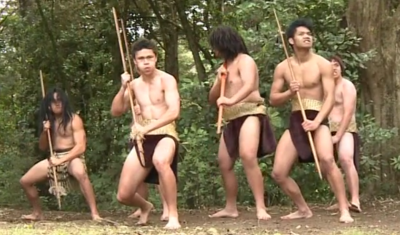
Attack



Wars were fought at the level of the hapu, but not always between individual hapu. Others were drawn in by close kinship ties or by their duty to support a dominant chief. Most hapu could field between 100 to 400 warriors, who fought as separate units commanded by their respective rangatira.
Planning an attack required a great deal of work, especially if it was directed against hapu living far away. To begin with, there were arrangements to be negotiated with potential allies. There was visiting to be done, feasting, discussions and debates. Then there were practical considerations. Extra crops were planted well before a long-distance campaign. Some of the harvest went with the war party, and the rest was to make sure there was enough food and seed stock for the following year. Haste and stealth were not necessarily important. It was not unusual for the enemy to hear word of the attack well in advance, allowing them plenty of time to prepare.
It is important to remember that Māori warriors were not professional soldiers – they were also the bulk of the male workforce. When the men were off fighting, they were clearly not available to undertake their usual work. Furthermore, many women and older children would travel with the war party to provide logistical support. The withdrawal of the most capable men and women from the workforce inevitably put pressure on the resources of the hapu.
Once the battle began, each unit would function in a separate but co-ordinated manner. Rangitira were not generals in the European sense – they led by example, fighting alongside their men. The course of a battle depended upon the situation: gaining access to an enemy pā was quite different to skirmishing in the forest or on the beach.
Without guns, Māori couldn’t kill each other from afar. The fighting was very real, hard-fought, with warriors and civilians killed at close quarters. There hasn’t been a lot of biological anthropology carried out on Māori skeletons, because ko iwi (human remains) are tapu in the extreme. However some of the skeletons which have been examined show that person died violently, by a sharp blow to the head with a patu-like weapon.
The fighting was constrained and controlled by tikanga, “rules of engagement” that both sides understood. Although the fighting was brutal and bloody, the objective wasn’t necessarily to annihilate the enemy. Most war parties set out to kill at least some people.1 However, it was not uncommon for a victorious war party to withdraw, having killed a sufficient number of people to achieve utu. If the warring hapū were connected by kinship a handful of deaths would suffice – the fighting would stop and peace talks would begin. Battles between non-related hapū were more protracted and brutal. The survivors of a hapū defeated might be driven from their lands, forced to seek an entirely new place to live.





